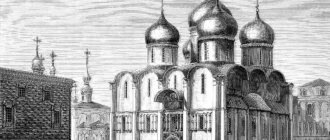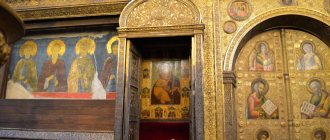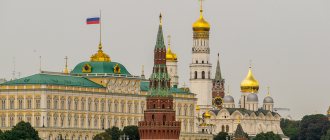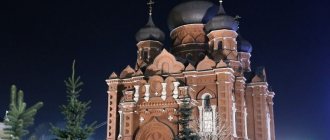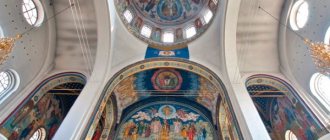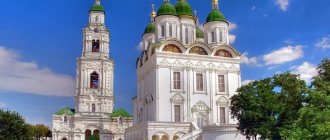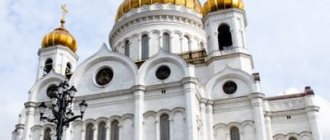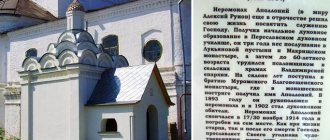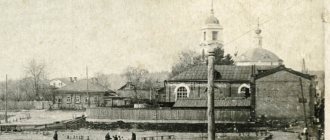Mir
Russia Republic of Tatarstan Kazan Annunciation Cathedral of the Kazan Kremlin Map loading in progress...
{"format":"leaflet","minzoom":false,"maxzoom":false,"limit":50,"offset":0,"link":"all","sort":[""], "order":[],"headers":"show","mainlabel":"","intro":"","outro":"","searchlabel":"\u2026 \u0441\u043b\u0435\ u0434\u0443\u044e\u0449\u0438\u0435 \u0440\u0435\u0437\u0443\u043b\u044c\u0442\u0430\u0442\u044b","default":"","import-annotation":false,"width ":"auto","height":"350px","centre":{"text":"","title":"""link":"","lat":55.79986099999999993315213941968977451324462890625,"lon": 49.10611000000000103682396002113819122314453125,"icon":""},"title":"","label":"","icon":"","lines":[],"polygons":[], "circles":[ ],"rectangles":[],"copycoords":false,"static":false,"zoom":8,"defzoom":14,"layers":["OpenStreetMap"],"image layers":[] ,"overlays":[],"resizable":false,"fullscreen":true,"scrollwheelzoom":true,"cluster":false,"clustermaxzoom":9,"clusterzoomonclick":true,"clustermaxradius":80, "clusterspiderfy":true,"geojson":"","clicktarget":"","showtitle":true,"hidenamespace":false,"template":"","userparam":"","activeicon": "","pagelabel":false,"ajaxcoordproperty":"","ajaxquery":"","locations":[{"text":"\u003Cb\u003E\u003Ca href=\"/palomnik/%D0% 91%D0%BB%D0%B0%D0%B3%D0%BE%D0%B2%D0%B5%D1%89%D0%B5%D0%BD%D1%81%D0%BA%D0%B8% D0%B9_%D1%81%D0%BE%D0%B1%D0%BE%D1%80_%D0%9A%D0%B0%D0%B7%D0%B0%D0%BD%D1%81%D0% BA%D0%BE%D0%B3%D0%BE_%D0%BA%D1%80%D0%B5%D0%BC%D0%BB%D1%8F\» title=\»\u0411\u043b\u0430\ u0433\u043e\u0432\u0435\u0449\u0435\u043d\u0441\u043a\u0438\u0439 \u0441\u043e\u0431\u043e\u0440 \u041a\u0430\u0437\u0430\u0 43d\u0441\u043a\u043e\u0433\ u043e\u043a\u0440\u0435\u043c\u043b\u044f\»\u003E\u0411\u043b\u0430\u0433\u043e\u0432\u0435\u0449\u0435\u043d\u0441\u043a\u 0438\u0439\u0441\u043e\ u0431\u043e\u0440 \u041a\u0430\u0437\u0430\u043d\u0441\u043a\u043e\u0433\u043e \u043a\u0440\u0435\u043c\u043b\u044f\u003C/a\ u003E\u003C/b\u003E\ u003Chr /\u003E\u003Ca href=\»/palomnik/%D0%A1%D0%B2%D0%BE%D0%B9%D1%81%D1%82%D0%B2%D0%BE:%D0%90 %D0%BD%D0%BD%D0%BE%D1%82%D0%B0%D1%86%D0%B8%D1%8F\" title=\"\u0421\u0432\u043e\u0439\u0441\u0442 \u0432\u043e:\u0410\u043d\u043d\u043e\u0442\u0430\u0446\u0438\u044f\»\u003E\u0410\u043d\u043d\u043e\u0442\u0430\u0446\u0438 \u044f\u003C/a\ u003E: \u0432\u044b\u0434\u0430\u044e\u0449\u0438\u0439\u0441\u044f \u043f\u0430\u043c\u044f\u0442\u043d\u0438\u043a \u0440\ u0443\u0441\u0441\u043a\u043e XVI \u0432\u0435\u043a\u0430. 1552 1918 043a\u0438\u0439\u0441\u043e\u0431 \u043e\u0440 \u0431\u044b\u043b \u043a\u0430\u0444\u0435\u0434\u0440\u0430\u043b\u044c\u043d\u044b\u043c \u0445\u0440\u0430 \u043c\u043e\u043c \u041a\u0430 \u0437\u0430\u043d\u0441\u043a\u043e\u0439 \u0435\u043f\u0430\u0440\u0445\u0438\u0438","title":"\u0411\u043b\u0430\u0433\u043e\u 0432\u0435\ u0449\u0435\u043d\u0441\u043a\u0438\u0439 \u0441\u043e\u0431\u043e\u0440 \u041a\u0430\u0437\u0430\u043d\u0441\u043a\u043e\u0 433\u043e\u043a\u0440\u0435\ u043c\u043b\u044f","link":"""lat":55.79986099999999993315213941968977451324462890625,"lon":49.10611000000000103682396002113819122314 453125,"icon":""}],"imageLayers":[]}
55.799856; 49.106037
Russia, Republic of Tatarstan, Kazan, Vakhitovsky district, Kremlin territory, 2
Kazan, Republic of Tatarstan
Russia
Phones:
(843) 5678079, 5678031.
Annunciation Cathedral of the Kazan Kremlin
- an outstanding monument of Russian architecture of the 16th century. From 1552 to 1918, the Annunciation Cathedral was the cathedral church of the Kazan diocese (currently the cathedral is St. Nicholas Cathedral on Bauman Street), priests were ordained here for centuries, and from the end of the 19th century. and consecrations of bishops (here Anthony (Khrapovitsky) and Andrey (Ukhtomsky) were ordained bishops).
History[[edit]h2>
The Annunciation Cathedral is the largest building of the Kazan Kremlin and the oldest surviving stone building in the city of Kazan.
It was built away from the destroyed Khan's palace and mosques in 1562.
Over the course of more than four centuries of its existence, the Annunciation Cathedral underwent numerous repairs and three reconstructions after devastating fires in 1596, 1672, 1694, 1742, 1757, 1815.
The most complete information about the repairs and reconstruction of the cathedral is given in the works of A. Yablokov and N. Razumov.
Annunciation Cathedral in 1837, lithograph by E. Tournerelli
After the fire of 1672, under the Kazan Metropolitan Joasaph (1675-1686), the outer walls were restored, the domes and domes were covered with iron. The cathedral was damaged and in a fire in 1694, Metropolitan Markell (1694-1699) carried out the first reconstruction of the Annunciation Cathedral. On the north side, on the site of the wooden ancient Church of Theology, a small warm church in the name of the Nativity of Christ with one dome was built, connected by a corridor to the cold Annunciation Cathedral. The narrow windows of the cathedral were widened, the temple was decorated with wall writing, and a new gilded and carved iconostasis was installed.
The Annunciation Cathedral revealed one remarkable feature of ancient Russian architecture - the dominant importance of the external appearance in comparison with its interior. The developed volumetric-spatial composition of the cross-domed church, the intricate shape of the domed domes gave the cathedral a complex silhouette, and a well-thought-out decoration system - the rhythm of narrow slit windows, gilding of domes, ornamental treatment of apses and drums with decorative belts - created the impression of artistic integrity and completeness of the appearance of the ancient cathedral.
During the same construction period, a few years earlier, a five-tier bell tower was erected on the southwestern side of the cathedral's porch in the forms of Russian patterned architecture of the second half of the 17th - early 18th centuries. The construction of the bell tower in the 17th century is evidenced by two drawings by N. Witzen, given in his book, published in 1692. Having undergone numerous reconstructions over three centuries, it lost its original outline, but amazed everyone who entered the Kremlin with its bells. In the lower tier of the bell tower was the largest and most powerful bell of the ancient city, its weight was 1,500 poods (about 24,570 kilograms). Under the belfry there was originally a temple in honor of the holy martyr Irina, which was closed in the 18th century due to disrepair and was restored only in 1832 at the expense of the Kazan merchant Chizhov. At the same time, the church was consecrated in the name of St. Herman, the second Archbishop of Kazan.
A significant reconstruction of the cathedral, the second in time, was carried out in 1736. The helmet-shaped chapters acquired new forms: the central chapter is a baroque two-tiered pear-shaped one, and the side ones are more convex bulbous shapes. The central head was covered with copper and gilded. On the western side, a refectory with a basement, two domes and a covered porch was attached to the quadrangle of the cathedral.
During the great fires in Kazan in 1742 and 1749, both cathedral churches were burned. Under Archbishop Luka Konashevich in the period 1736-1755, they were restored again: wall writing and icons were updated, all the chapters of the Annunciation Cathedral were gilded.
After the fire of 1757, the cathedral was restored through the efforts of Metropolitan Gabriel (1755-1762). Under Metropolitan Benjamin (1762-1782), the heads of the cathedral were again gilded, covered with “pure sheet iron”, the inside of the cathedral was plastered, decorated inside and outside with architectural stucco figures, wall painting was renewed, and the porch was enlarged.
Despite frequent repairs, by the end of the 18th century the cathedral had fallen into disrepair, and under Archbishop Ambrose (Podobedov) (1785-1799) major repairs were carried out: the walls of the cathedral and bell tower were strengthened, the roofs were repaired, the icons and wall paintings were updated. During this repair, the dilapidated Church of the Praise of the Blessed Virgin Mary, which was near the bell tower above the gate to the bishop's courtyard, was dismantled, and the materials were used to repair the cathedral.
The devastating fire in Kazan on September 3, 1815, which killed 1,500 houses and 19 churches, also severely damaged the Annunciation Cathedral; the flame destroyed its interior: the iconostasis, utensils, choirs, windows and doors; along with the plaster, the ancient wall paintings (the remains of which were discovered and restored at the beginning of the 21st century) were destroyed; even the cast-iron floor was damaged by fire. The warm temple remained undamaged. This fire forced a thorough reconstruction of the temple. From 1817 to 1821, the dilapidated refectory was reconstructed, and a covered gallery appeared, connecting the cathedral with the bishop's house.
Annunciation Cathedral in 1839, lithograph by A. Durand
Due to the growth of the city's population in the 1830s, it became necessary to build a new one on the site of the Annunciation Cathedral, which would require demolishing the old cathedral and bell tower. In 1835, the provincial architect F. I. Petondi and the academician of architecture M. P. Korinfsky made several versions of the projects.
Emperor Nicholas I, who visited Kazan on August 20, 1836, did not approve of these projects, but “Highly ordered to turn the cold Annunciation Cathedral into a warm one and expand it.”
In 1841, the third major reconstruction of the cathedral began according to Petondi's design. In 1841, the Nativity Cathedral was dismantled. On the site of the southern side-altar in the name of Boris and Gleb, a side-altar church in the name of the Nativity of Christ was founded in memory of the dismantled Nativity Cathedral, and on the north side a new side-altar church in the name of Boris and Gleb was founded, just like the southern side-altar, on the same foundation. The consecration of the newly built chapels took place in June 1846. On the western side, in 1842-1843, a new large two-story refectory was added to the cathedral, which has survived to this day, and a high open porch, which in 1863, according to Bessonov’s design, was turned into a porch covered on all sides.
The floor in the cathedral was raised by one fathom in 1842.
During this period, stove heating was installed in the cathedral. Several huge Dutch tiled stoves, and partly so-called Untermark round stoves, were placed in different places. The reconstruction of the Annunciation Cathedral was carried out with large deviations from the project, as evidenced by archival documents.
The next major renovation of the cathedral took place in 1855. The provincial architect Bessonov made a project for updating the iconostasis according to ancient models in Orthodox churches. The icon painting work was carried out by Gagaev, the arrangement of the iconostasis, its gilding and painting of the walls were carried out by the craftsmen of the merchant Ilyina and the master Bichurov.
In 1869-1870, the famous Russian icon painter from the village of Palekha, Vladimir province, N. L. Safonov, painted the walls and vaults of the cathedral. The renovation of the iconostasis and icon cases was carried out by master Ageev.
In 1875, the Moscow master Bychkov replaced the stove heating with two pneumatic stoves, which were made of white refractory brick in the lower floor of the cathedral, from which heated air, through pipes brought out from under the floor, came out into the temple premises through vents made in the lungs and beautiful pedestals placed in several places near the walls of the temple. The vents opened and closed as needed. In place of the dismantled tiled stoves on the wall separating the main temple from the refectory, sacred images were painted by the hand of N. L. Safonov. At the same time, the bulky icons on the four pillars of the temple were replaced with paintings, as had previously been done in the upper parts of the columns. On the western wall of the cathedral, in the piers between the entrance arches, two paintings depicting Jesus Christ and the apostles are painted. The western wall of the refectory at the entrance doors of the temple, in place of the stoves, was also painted. The wooden altar doors were replaced with bronze and gilded ones, with icons of the holy evangelists painted on them.
Twenty years later, in the period 1889-1890, the Annunciation Cathedral was again repaired: the wall paintings were washed, the roof was fixed and painted, and the domes were gilded.
In 1904, the architect F. N. Malinovsky prepared a project and estimate for repair work on the cathedral and reconstruction of the bell tower, which began in the summer of 1906. The outer walls of the cathedral and the bell tower were renewed, and a beautiful stone chapel was built instead of the dilapidated extension to the cell of St. Gury. In 1907, the roofs and domes were painted, the crosses and stars on the domes were gilded, and air-heating heating and ventilation were installed. In 1908, the chapels of the cathedral were renewed. After repairs, during the consecration on February 1, 1909, the southern aisle was renamed in the name of Saints Boris and Gleb, the northern aisle - in the name of Saint Gury. In addition to the two chapels, the cathedral had two more chapels. One in the name of St. Herman, the Kazan wonderworker, in the bell tower under the belfry; it was originally named in honor of the holy martyr Irina and, due to its disrepair, was closed at the end of the 18th century. In 1832, at the expense of the merchant Chizhov, it was repaired and consecrated in the name of St. Herman.
Another side church, in the name of All Saints, was located in the basement under the altar of the cathedral in the tomb of the Saints of Kazan, consecrated in 1896.
The last renovation of the Annunciation Cathedral of the pre-revolutionary period was carried out in 1913-1914, when Emperor Nikolai Alexandrovich was expected to arrive in Kazan to commemorate the 300th anniversary of the House of Romanov. Well-known icon painters in Russia - brothers M. N. and N. N. Safonov (sons of N. L. Safonov) renewed wall paintings, icons and utensils.
Cathedral at the beginning of the 20th century
The Cathedral of the Annunciation was often subject to fires, destruction and reconstruction during the Soviet period.
In the 1930s, the bell tower of the Annunciation Cathedral, the porch on the western side, the chapel of St. Gurias, and the heads of the cathedral were demolished, leaving only the central drum. In this form the cathedral existed until the second half of the 20th century.
In the 1950s, with the creation of a Special Research and Restoration Workshop in Kazan, work began on studying the building of the Annunciation Cathedral. The first studies of this ancient building as an architectural monument of the city of Kazan and proposals for its restoration were made by Doctor of Architecture, Honored Architect of Russia, Professor S. S. Aidarov.
On November 28, 1978, the State Inspectorate for the Protection of Historical and Cultural Monuments agreed on a preliminary design for the restoration of the Annunciation Cathedral, providing for fragmentary restoration of the monument to its optimal appearance with the restoration of the lost domes of the 18th century. A year later, the Kazan Special Research and Restoration Workshop restored the lost domes and crosses of the cathedral.
By the beginning of the 21st century, in connection with the 450th anniversary of the Kazan diocese, restoration work was carried out, lost elements of the external appearance of the building were restored, wall paintings were restored in the interiors, the iconostasis, wall icon cases, chandeliers and other attributes of the internal church decoration were recreated. Comprehensive scientific research and design and restoration work were carried out by restorers of the Tatar Special Scientific and Restoration Directorate together with specialists from the state unitary enterprise "Tatinvestgrazhdanproekt" and the Interregional Scientific and Restoration Art Directorate.
History of the Temple Bell Tower
After the construction of the temple, a wooden bell tower was initially built near it - the so-called belfry. In the first half of the 17th century, a 50-meter five-tiered bell tower made of white brick was erected instead, very reminiscent of the Ivan the Great Bell Tower in Moscow and slightly inferior in height to the Syuyumbike Tower.
The bell tower of the Annunciation Cathedral was beautiful and tall
The first tier of the structure was equipped with a one and a half pound bell - the largest in Kazan. Between the fourth and fifth tiers there were three rows of stepped kokoshniks, replacing the roof. The tall gilded head of the bell tower in its shape resembled the Russian helmet of the Moscow kingdom, and this was the main difference between the Kazan bell tower and the Moscow one. In the 18th century, there was a striking clock on the bell tower. It is believed that its architectural style combined elements of the Syuyumbike Tower as Tatar motifs, and Russian architecture in the form of kokoshniks and a helmet.
The bell tower was located near the refectory of the temple, adjacent to its porch. Even in a guide to Kazan dating back to 1927, the bell tower of the Annunciation Cathedral is described as a well-preserved architectural structure of the 17th century. But already in 1928 it was destroyed for ideological reasons. Only a few ancient engravings, lithographs and photographs have preserved its appearance.
But even without the Bell Tower, the ancient cathedral is an ancient pearl of the Kazan Kremlin
You should definitely see the Annunciation Cathedral, visit it, and also look into the Museum of the History of the Cathedral. You can learn about other attractions of the Kazan Kremlin here.
Author of the article: Kasatkina Tatyana
Description[[edit]h2>
The Annunciation Cathedral of the Kazan Kremlin is the most remote example of the Pskov architectural school and the oldest surviving historical and architectural monument in the ensemble of the Kremlin and the city. Cross-domed, with five chapters resting on six pillars and three altar apses, the cathedral initially recreated the layout and appearance of the Assumption Cathedral of the Moscow Kremlin, emphasizing the new status of the Kazan kingdom. Many Kazan archpastors found rest in the basement of the cathedral, thus the Annunciation Cathedral for the Kazan region had the same meaning as the Cathedral of the Deposition of the Robe for the Moscow Kremlin.
Despite later reconstructions, the original Pskov style of the cathedral can be read in the strip of typical Pskov ornamentation encircling the base of the central dome and the arcature belt decorating the apses.
Excursion to the cathedral
You can learn more about the history of the Annunciation Cathedral in Kazan, go inside, and see the interiors on a sightseeing tour with a visit to the Kazan Kremlin. The excursion is valuable not only for its aesthetic component. Stories about history, about former cultural wealth, about a dark period in our history during which wealth was lost - all this makes us think deeply about our responsibility to future generations.
Kazan clearly shows how followers of different religions and views can live in harmony and harmony. The close proximity of one of the central Orthodox churches to the largest mosque in Tatarstan, Kul Sharif, is silent evidence of the mental breadth of Russia, where there is a place for everyone who desires peace and tranquility.
Shrines[[edit]h2>
The cell of St. Gury
During the reconstruction of the cathedral in 1841, under the Boris and Gleb chapel, the cell of St. Gury
- a small closet, made of the same Volga stone as the cathedral, in which the saint prayed in solitude, as it is written in the Life, “standing in communion constantly in prayer, bringing it to God, in a cell near ... Boris and Gleb.”
On the wall was discovered an Image of the Savior not made by hands, painted, probably by the saint himself, with mineral paints, the colors of which become brighter from year to year. The cell immediately became an object of pilgrimage for Kazan residents; soon a shrine was built for the fresco, the walls were plastered, and a door was cut in the west. Somewhat later, at the expense of the head of the cathedral, V.F. Bulygin, a chapel was added to the cell, which has survived to this day.
Built with government money
There are rallies near St. Isaac's Cathedral in St. Petersburg, both those who are in favor of transferring the cathedral to the Russian Orthodox Church and those who are against.
Those who are against are more numerous. The transfer of the cathedral to the Russian Orthodox Church has been commonplace since 2010, when the law on the restitution of church property was adopted. Over 6 years, in St. Petersburg alone, 334 objects were transferred to the jurisdiction of the local diocese. And this is fair, the church should receive what rightfully belonged to it. But every rule has exceptions. And it seems that the history of the transfer of St. Isaac's Cathedral fits this definition. Although, however, the concept of “transfer of the church” is not entirely correct. The cathedral remains the property of the city; it is only transferred to the Russian Orthodox Church for 49 years for free use.
St. Isaac's Cathedral - one of the symbols of St. Petersburg - was built by order of Peter the Great by the architect Montferrand. It was the “construction of the century” - more than 400 thousand workers took part in it. The cathedral was built with government money and was never the property of the church, although services were regularly held there.
St. Isaac's Cathedral is one of the symbols of St. Petersburg. Photo: petersburg.biz
During the blockade, the golden dome of the cathedral was an excellent target for the Germans, but the Leningraders defended St. Isaac's. Hungry, weak people covered the dome with hundreds of liters of green paint, risking their lives. And although the fragments reached the temple, not one of the bombs hit the dome.
Since 1931, a museum complex has settled in Isaacia, by the way, one of the most successful museum projects. Last year, about 4 million tourists visited it. Well, who, having arrived in St. Petersburg, will not visit St. Isaac's Cathedral? Revenue from ticket sales is more than 800 million rubles. The lion's share goes to the maintenance of the cathedral and its restoration, the maintenance of the museum staff (which is about 400 people), but there is also profit. For example, 2 years ago it amounted to 140 million rubles. At the same time, services were held in the cathedral. Last year there were about 600 of them.
Director of the St. Isaac's Cathedral museum-monument Nikolai Burov does not want conflicts with the Russian Orthodox Church. “I respect our diocese, I believe in peace. We have a unique system of interfaith relations. God forbid, we will upset the balance. And it can be violated with the best intentions,” he says in an interview.
The Russian Orthodox Church promised that after the transfer of the cathedral, and this may not happen earlier than the end of this year, if nothing changes, admission to it will be free. But if, according to statistics, the number of parishioners is only one percent of the total number of visitors, and there is no income from ticket sales, with what funds and who will maintain the gigantic cathedral?
Nikolai Burov does not want conflicts with the Russian Orthodox Church at all. Photo spncomms.com
“Isaac is a unique case of a profitable mission. Here people are told about Orthodoxy for their money,” writes the famous publicist and philosopher, deacon Andrei Kuraev, in LiveJournal.
The issue of transferring St. Isaac's Cathedral is controversial. On the one hand, there is a law on the restitution of church property. On the other hand, this cathedral never belonged to the church, it was not a parish church and was used only on special occasions. In recent years, divine services have been held there almost every day; there are no obstacles to them. And divine services do not prevent thousands of tourists from visiting St. Isaac’s and bringing money into the income of the museum complex. Harmony has been achieved, what will happen next, who will win and who will lose from the situation - we will find out soon.
Relics of saints
Despite the trials that befell the temple, the cathedral necropolis was preserved well. The burials that were once located under the altar did not survive, but the burials of metropolitans and archbishops in the cathedral itself and the chapel remained untouched. Drawing an analogy, we can say that this cathedral for Kazan is the same as St. Sophia’s for Novgorod or the Robbery for Moscow.
The relics of St. Gury, who stood at the origins of the Annunciation Cathedral, were located inside before the revolutionary events of 1917, as well as the ancient cell of the archbishop, found during the reconstruction of the temple in the 40s of the 19th century. On one of the walls of the cell they discovered a fresco depicting the Savior Not Made by Hands. Half a century later, a chapel was erected above the cell; this happened ten years before power in the country passed to the Bolsheviks, who organized a janitor's room in the chapel. Fortunately, the cell itself was not damaged too much; it was covered with bricks, as a result of which the fresco was well preserved.
In the 19th century The cathedral's paintings were almost lost as a result of a succession of fires. In the 70s, icon painter N. Safonov arrived to restore the wall paintings in the refectory. The talented master with his creativity glorified the location of the Kazan Icon of the Mother of God in the cathedral. Also, thanks to his efforts, wall images appeared in the refectory on the themes of the discovery of holy relics, the consecration of other Kazan churches, portraits of saints and martyrs.
Treasures of the Sacristy
There were all sorts of shrines and unique artifacts in the cathedral’s sacristy. The vestments of bishops embroidered with gold and silver and church vessels made of precious metals were kept here; handwritten ancient Gospels, including the book of the New Testament in a gold setting with diamonds. There was also a colossal Gospel here, weighing 80 kg, which was used only once a year, on the Easter holidays.
Liturgies in the cathedral were performed on ancient canvas plates with biblical images. In sacred rituals they used a silver ladle and cup, donated to the Annunciation Cathedral by the royal family. These and other precious deposits and gifts from influential people and representatives of the monarchy were kept in the sacristy. All this “economy” was beautiful and unique, made by skilled craftsmen at the highest level of quality, using gold and silver, diamonds, pearls, and emeralds. In those days, the weight of a full bishop's vestment reached 40 kg.
In 1919, a serious danger loomed over the treasures of the sacristy. Representatives of the Soviet government discovered them and already intended to seize them, while simultaneously abolishing the sacristy as a legacy of the tsarist regime. And only through the efforts of Kazan historians was it possible to preserve it and transfer the artifacts to the museum. However, subsequently the lion's share of the treasures disappeared without a trace.
What to see
The main shrine of the church is the relics of St. Gury. The first archbishop and builder of this place. Today pilgrimage tours are held here. They are located behind the wooden vestibule at the right aisle. The decoration itself is also interesting: frescoes, icons, paintings, utensils and decor. Some parts were preserved from ancient times and restored, others were restored according to the drawings and drawings of their predecessors. A special place is occupied by the icon of the miraculous Kazan Mother of God.
It is strictly forbidden to take photographs inside, unlike the Kul-Sharif mosque located next door.
vladkatkov.ru
A museum has been organized at the Annunciation Cathedral, which is located in the same building. The exhibition tells about the history of the temple and the city as a whole. You will see valuable exhibits: the staff of St. Gurias, ancient icons, religious books of the 16th century. There are more than a hundred things in total. There are projectors installed inside. For example, they are used to reproduce the film “Intercessor” about the icon of the Mother of God. There are also items significant for Kazan: a gift from Catherine the Great - a model of a carriage, historical photographs and much more. The museum also hosts events:
- Old Russian calligraphy lessons on Sundays at 11:00;
- master classes on Russian patterns on fabric at 14:00 on the second and fourth Saturday of every month;
- seminars on the basis of religious cultures for school groups;
- Excursion programs with a guide are available for everyone by appointment.
How to get there?
Getting to the attraction is easy. It is located in the capital of the Republic of Tatarstan - Kazan. Train, bus and air connections are available. You can choose any solution depending on individual preferences. If you are traveling from Moscow, it is more convenient to use the M-7 federal highway. It goes through cities such as Vladimir, Cheboksary, Nizhny Novgorod. You will need to cover approximately 800 km. In Kazan itself, getting to the shrine will not be difficult. Buses - 22, 58, 83, 89. The nearest station is Kremlevskoye metro station.
Refectory
A one-story brick refectory building appeared as part of the cathedral in 1736. At the same time, the craftsmen changed the shape of the domes, but the results of their efforts did not last long. The fire that broke out in 1815 caused enormous damage to the buildings of the Kazan Kremlin, and the question of large-scale reconstruction arose. As part of the general restoration work, the refectory was also put in order, and a covered gallery was added to it, which led to the bishop's house.
A quarter of a century later, the architect F. Petondi developed a project for the reconstruction of the cathedral with the aim of transforming it from summer to winter (heated). Serious alterations took place in the refectory, which was rebuilt from low to high, with a staircase to the choir and a room for the cathedral sacristy. With the renovated refectory, the cathedral began to look different. At the same time, a high porch was added to it at the main entrance.
Architecture
The external design of the monastery produces a contradictory opinion. At first glance, the building may seem somewhat asymmetrical or disproportionate. Many people talk about its excessive overload. One gets the impression that it stretches out absurdly on the eastern side. The side parts protrude slightly forward.
It is currently quite difficult to select a prototype for this object. If you look at this creation of the architects, you will get the impression that you are immersed in the distant past - ancient masonry, unusual structure. The number of people wishing to visit this place only increased every year. Soon the facility could not accommodate everyone. Therefore, the role of the central temple was redirected. The shrine was not dismantled and was still one of the main decorations of the city. It harmonizes perfectly with the background of other buildings.
If you carefully examine the landmark, you will certainly notice the iconic outlines of the architecture of the great and famous master Postnik Yakovlev. Particularly symbolic features are clearly visible on the roof of the side aisles. The walls are characterized by a keel-shaped design, the facades are richly decorated. The main volume is represented by three apses and drums. They are framed by arcature belts. At the top of the structure there is a traditional Pskov ornament. The same pattern is on the drum of the central chapter. All these moments refer us to the Middle Ages. In total, all the decorative elements give the shrine a certain piquancy and expressiveness. Everything looks as harmonious as possible.
What is the Kremlin?
Before we look at the external and internal decoration of the Annunciation Cathedral, let's understand what the Kremlin is? This is a detail of urban planning characteristic of the so-called German type. Once upon a time, the ancient Slavs completely fenced their settlements. And it was called “fortification”, “kremlin”. In the Ukrainian language, as a more archaic language, the word “vіdokremlyuvati” has been preserved. It means “to separate”, “to enclose”.
The Norman princes introduced their customs into the urban planning of the ancient Russians. The rulers' house stood apart from other dwellings and was fenced off from the "posad" by a wall. This fortress in the city still bore the name of the Kremlin. Residents were forced out of the fence and settled without defensive walls. According to German law, the lord of the castle had to provide shelter to his vassals in the event of an enemy attack. But this is not the case with the Moscow princes. They regarded their fortress as a private residence. And they decorated it accordingly.
This is how the Kremlin cathedrals appeared. The Annunciation Cathedral served as a house church, and the Arkhangelsk Cathedral served as a tomb for members of the royal family. Ordinary Muscovites listened to services in parish churches in Posads. And all the luxury of the interior decoration of the Kremlin churches was given only to a select few, close to the throne.
